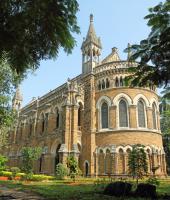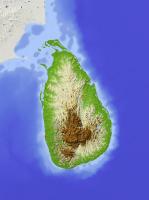The TopUniversities.com guide to higher education news from around the world.
Branch campus activity shifts from the Middle East to the Far East
Over the past ten years, the Middle East has been the most popular destination for universities setting up foreign branch campuses. However, a report released last week by the Observatory on Borderless Higher Education has revealed that the balance is shifting eastwards, with China and Singapore seeing the most growth since the last report was published in 2009.
However, though these two countries can now claim 17 and 18 branch campuses respectively, the United Arab Emirates still hosts by far the most, with 37 such establishments within its borders. However, how long this will remain the case is debatable, as a glut of new foreign campuses is scheduled to open in China in the near future.
The US leads the way in establishing branch campuses, with 78 of the total 200 currently in existence worldwide, and around a third of the further 37 planned branch campuses are offshoots of US universities. However, the report also found that the establishment of branch campuses is not limited to universities in the West. India, which has four branch campuses in Mauritius, is held up as an example.
The report also reveals that overall the establishment of these campuses is slowing. Between 2006 and 2009, for instance, an average of 27 branch campuses opened annually. Since 2009 the rate has slowed to around 19.
 Higher education participation rates reach 20% in India
Higher education participation rates reach 20% in India
Recently released figures indicate that 20% of Indian students between the age of 18 and 23 are entering higher education. Though the University Grants Committee statistics only show an increase to 17.5% in 2009-10, experts have been able to calculate the higher figure using data from 2011. This is a considerable improvement on the target figure of 16% by the end of 2012, and makes the final target of 30% by 2020 seem more realistic. The equivalent figure for 2007-08 stood at 12.5%.
Commentators have noted that this increase in participation is largely due to the expansion of the private sector, the result of which has been the creation of 200 new universities and 8,000 new colleges, rather than efforts on the part of the central authorities. Some have also questioned a policy of simply trying to increase participation rates without focusing on quality and meeting the needs of the employment market. A heavy bias towards engineering and management, and chronic levels of understaffing (some estimates put the figure as high as 33%), have been identified as reasons for concern.
A disparity between participation rates in different states is also an area of concern. While nearly a third of students in Delhi enter higher education, the figures for less affluent north-eastern states is significantly lower, with Tripura’s figure of 6.6% the lowest in the country.
 Ecuadoran universities threatened with closure
Ecuadoran universities threatened with closure
Ecuador’s university regulatory body, the Board of Assessment, Accreditation and Quality Assurance in Higher Education, has announced that it will be launching an investigation into 26 of the country’s universities to see whether it is financially viable for them to stay open. If they fail, they will be closed.
The 26 universities under investigation were identified in 2009, when all 68 of Ecuador’s universities were subjected to a financial evaluation. The institutions will discover their fate by April.
 Poland announces creation of elite research centres
Poland announces creation of elite research centres
In order to increase the prestige of the nation’s universities, the Polish government has announced that it will be conferring the status of elite research centre – known officially by the acronym KNOW – on up to six institutions focussing on sciences, medicine, healthcare or physical culture in 2012. As well as the title, the status comes with US$15 million of funding, spread over five years.
The winning institutions will be judged on their overall performance rather than a specific project, with the criteria including citations, patents and connections with the business world. Both the criteria and the levels of funding have been criticized by academics.
A new national qualification framework has also been announced, which is intended to bring Poland in line with the goals of the EU’s higher education policy. This will free universities from central state control and allow them to create courses beyond those approved on the governmental list. It is thought that this will allow more interdisciplinary and diverse courses to be created.
 Student protests hit Sri Lanka
Student protests hit Sri Lanka
The last couple of years have seen mass student protests in the UK and Chile grab headlines, as the two countries’ governments have moved closer to privatized systems of higher education with higher fees. Though they have not grabbed as many headlines, students in Sri Lanka have also been protesting en masse since 2010, with the government’s controversial private universities bill the subject of their ire. It is believed by many that the bill will see the end of free private education in the South Asian island nation.
The beginning of 2012 has seen a new wave of protests, resulting in the temporary closure of two universities (Sri Jayewardenepura University in Colombo and Rajarata University in the country’s north). Some have accused the government of tactically arranging the protests that led to closures, meaning students will now struggle to arrange further protests. The government, on the other hand, has blamed the far left opposition party, the Janatha Vimukthi Peramuna (JVP), for sowing the seeds of dissent.
Several students have been arrested, with some having been waiting since 2010 to be tried.
Since the time of writing, the bill has been temporarily shelved and replaced by the Quality Assurance, Accreditation and Qualification Framework Act, which will monitor the standards of existing private universities in the country. Student opposition continues, as it is suspected this bill will allow the establishment of new private institutions in Sri Lanka.